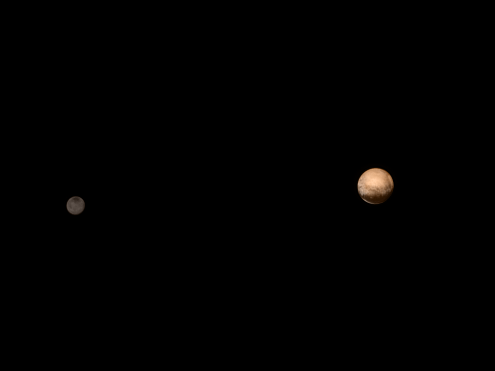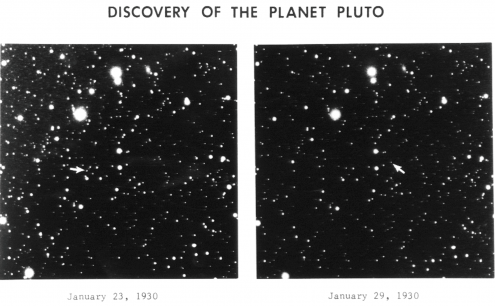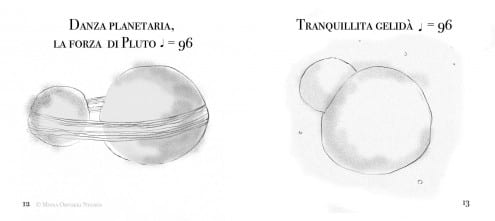The most distant galaxy
By Oli Usher, on 6 August 2015
 The blurred, faint, orange speck at the centre of this image may look unremarkable, but it is the most distant galaxy ever to have been confirmed by scientists. Called EGSY8p7, the galaxy was identified by UCL PhD student Guido Roberts-Borsani in the Hubble image above, based on its unusually reddened colour profile.
The blurred, faint, orange speck at the centre of this image may look unremarkable, but it is the most distant galaxy ever to have been confirmed by scientists. Called EGSY8p7, the galaxy was identified by UCL PhD student Guido Roberts-Borsani in the Hubble image above, based on its unusually reddened colour profile.
Followup observations using the WM Keck observatory by a team including Roberts-Borsani and UCL astrophysicist Richard Ellis have confirmed the find. Splitting the light into its component colours, the spectrograph at the observatory showed that the galaxy’s spectrum was shifted far towards the red end of the spectrum by the expansion of the cosmos. This ‘redshift’ is an unmistakeable sign of an extremely distant object.
It is at a redshift of 8.68, meaning we see it as it was when the Universe was only about 4% of its current age. Its light has been travelling for over 13 billion years on its long journey to us.
10 Questions
By ucqncca, on 30 July 2015
In this monthly feature, the Institute of Biomedical Engineering (IBME) interviews our researchers, academics, students, clinicians, affiliates and partners to find out a little more about who they are and what they do.
This month we interviewed Professor Kwang-Leong Choy, Director of the UCL Institute for Materials Discovery and Professor for Material Discovery at UCL. We asked her 10 questions around her research, career and personal life. Here are her answers….
 1) How long have you worked as Director of the UCL Institute for Materials Discovery and Professor for Material Discovery at UCL?
1) How long have you worked as Director of the UCL Institute for Materials Discovery and Professor for Material Discovery at UCL?
Since February 2014
2) Can you please describe what it is you do?
I work in Materials Discovery, so we work with new materials, new processes, materials with improved/enhanced performance, new applications of materials, and we link theory with practice.
3) What brought you to the world of science/engineering/medical technologies/medicine?
I’ve always wanted to make a difference in the science, engineering and medical fields. Now I’m able to use materials and apply my knowledge and skills to contribute to these fields.
4) What keywords would you use to describe your work?
Innovation; Discovering new things; Excitement; Passionate about inventions; Novelty factor.
5) What has been your career highlight?
The research that I do is incredibly important to me and it’s exciting to see how my work can make a difference in the world. It’s remarkable to see how my research ideas have been transformed from conception to demonstration and exploitation.
6) What’s the best piece of advice you’ve given others?
There are so many little sayings I enjoy sharing with others. Not only do I believe them, I also live by them daily: Failure is a medicine that one should use to improve; When one door shuts, another opens. When you lose one opportunity, you often find a different one; Life is a journey.
7) If you had a superpower, what would it be and why?
I would love to engineer a perfect surface solution with self-healing properties and the capability to harness energy from nature in an effortless and eco-friendly way – that would be amazing. And then I would develop new materials based on my research.
8) What do you do in your spare time?
I really enjoy getting involved in various charity projects. I would always like to do more for the community, but time is always a factor. I also enjoy spending time with my children.
9) What’s your favourite book at the moment?
Life Ascending: The Ten Great Inventions of Evolution by Nick Lane
10) Is there anything else you would like to share?
I would love the opportunity to collaborate with UCL colleagues across all disciplines and open up new areas of research leading to material discovery. If you are also interested in getting involved in something like this, please send me an email at k.choy@ucl.ac.uk
Professor Choy obtained her D.Phil. in Materials Science from the University of Oxford. Her D.Phil. thesis was on the Chemical Vapour Deposition of new ceramic protective coatings for SiC fibres reinforced Ti based metal matrix composites.
She currently leads a team of 12 researchers, performing pioneering research into novel, sustainable, and cost-effective processing of nanostructured materials, thin films and thick coatings using non-vacuum and environmentally friendly chemical vapour based deposition methods, with unique nanocrystalline microstructure and superior properties for structural, functional and biomedical applications.
She has over 25 years’ experience in surface coating and nanomaterials.
Vintage space: Venus in 1991
By Oli Usher, on 28 July 2015
On 5 May 1989, the Space Shuttle Atlantis released the Magellan probe into low Earth orbit.
A short while later, Magellan’s rockets fired, sending it towards the sun.
Swinging around our star, it arrived at its destination 15 months later: the planet Venus.
Venus is in some respects the most Earth-like planet in the Solar System. It is a similar size to our planet, has a rocky surface and a thick cloudy atmosphere. However, it is much closer to the sun, and thanks to its atmosphere, experiences a powerful greenhouse effect.
Surface temperatures there are well over 400 degrees Celsius, atmospheric pressure is similar to what submersibles experience a kilometre down into Earth’s oceans, and the ‘air’ of Venus’ atmosphere is full of sulphuric acid.
Exploration of Venus’ surface has been in the form of brief snapshots, taken in the few tens of minutes that landers survive the harsh conditions there. All the landers so far have been Soviet; UCL has a number of their photos in its Centre for Planetary Sciences’ image archive (with a selection available online in high resolution).
Observing Venus from space is less challenging – and less rushed.
Between 1990 and 1994, Magellan was able to study the planet’s surface at leisure from its position high above the atmosphere. Because of the thick clouds, its images had to be produced by radar rather than optical photography, so they are not in colour. But they are extremely sharp.
Here is one of these images, held in UCL’s archives:

One of Magellan’s radar images of Venus’ surface. (The image is squint in the original!). Credit: UCL RPIF
Most of the highly processed images from Magellan are produced by multiple passes of the spacecraft over the planet’s surface, building up a complete image of the surface. This particular picture, however, is incomplete, revealing how Magellan’s images are put together. The black stripes show the gaps between the strips observed during different orbits of the planet.
Also in UCL’s archives are some of the planning documents NASA produced as part of the mission, including this full map of the planet’s surface:

Planning chart for the Magellan mission. Click here for labelled image showing the location of the above radar map. Credit: UCL RPIF
Links
- Centre for Planetary Sciences
- UCL Regional Planetary Image Facility
- Snapshots from Space History (online exhibition of images from the Centre for Planetary Sciences)
- UCL Physics & Astronomy
- UCL Earth Sciences
- UCL Museums & Collections
Five years of Arctic ice
By Oli Usher, on 21 July 2015
New research from scientists at UCL and the University of Leeds shows an unusually cool summer in the Arctic in 2013 led to a boost in sea ice. The research, carried out with the European Space Agency’s CryoSat-2, gives researchers of the fluctuations in ice between years, and suggests that pack ice in the northern hemisphere is more sensitive to changes in summer melting than it is to winter cooling.
The image above (click to animate it) shows the variation recorded by CryoSat-2 from 2010 to 2014.
Photo credit: ESA/CPOM (free for most uses – see conditions)
Pluto and Charon: A planetary waltz
By ucrhmon, on 14 July 2015
NASA’s New Horizons probe is flying past Pluto today, after years of travel. It is the first ever probe to visit the Pluto system. Here, Minna Orvokki Nygren (UCL Science & Technology Studies) describes a unique art-science collaboration commissioned by UCL & Birkbeck’s Centre for Planetary Sciences to celebrate the event.
Pluto and Charon – A Planetary Waltz was composed in collaboration between composers Catherine Kontz and Minna Orvokki Nygren. The work was commissioned by the Centre for Planetary Sciences UCL/Birkbeck (CPS) and it received its premiere on the 24th of June 2015 at An Evening with the Planets event at the UCL by pianists Valentina Pravodelov and Kerry Yong.
The main organiser of the event, Professor Steve Miller’s support and enthusiasm towards the project were crucial in realising this new work.
The piece was inspired by two photographic plates that led to the discovery of Pluto in 1930 by amateur astronomer Clyde W. Tombaugh.
These plates were used to devise the overall form for the musical work. The distance the bodies travelled across the sky and their relation to other bodies was reflected in the music. When seemingly further away from other celestial bodies, the warped “waltz” of Pluto and Charon, written in 5/4 time, takes over with its prominent bass line and thick chords.
A key aspect of the composition is its gestural dimension which the pianists take on during performance, such as switching seats with each other as in an “orbital ballet,” or the use of custom planetary mallets applied to the piano interior marking off specific movements in the piece.
Other features, such as the size, temperature, consistency and albedo of the bodies were also part of the compositional process. The dwarf planet Pluto being approximately twice the size of Charon is given a more powerful and majestic voice in the work, while its counterpart Charon’s music is lighter, slower and mysterious. The Kuiper belt’s chilly conditions are reflected in the piece by combining extremely high and low pitches of the piano, and giving them an ethereal resonance through the use of distinct pedalling.
An illustrated score of Pluto and Charon was created to give the audience an opportunity to follow the movement of the bodies and the musical piece.
Related links
Hitting rewind on cosmic history
By Oli Usher, on 9 July 2015
The universe is not smooth. Stars are clumped into galaxies. Galaxies are bound in clusters. And the clusters follow a vast universe-wide web of dark matter filaments, with huge voids between them.
Seeing how this web has changed over galactic history is one of the holy grails of astronomy.
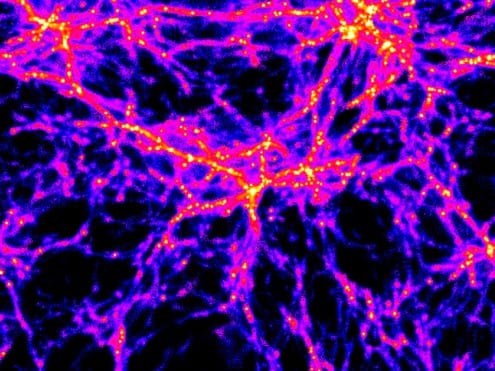
A computer model of the filamentary structure of the universe at the age of about 2 billion years. Credit: ESO (CC-BY)
Astronomers now know that the universe is not only expanding, but is doing so at an ever increasing rate. The driver for this expansion, dubbed ‘dark energy’, however, is still a mystery. Even its most basic properties, such as how it has affected the structure of the universe over time, are the subject of continued scientific debate.
If we could turn back the clock, and see snapshots of the how the universe looked at stages throughout its history, we would take a huge step closer to understanding dark energy.
Fortunately, two major projects currently under way are doing this: the Dark Energy Survey (DES) and the Kilo Degree Survey (KiDS). UCL scientists are closely involved with both, and the KiDS project has this week released its first data.
Over the next few years, KiDS will use the ESO VLT Survey Telescope in Chile to produce a detailed colour image of 1500 square degrees of sky (equivalent to a square 80 times the height and width of the full Moon). A parallel project will map the same area in five wavelengths of infrared light.
As light from distant galaxies and quasars passes through the cosmos, its path is slightly bent by the gravity of objects in the foreground, an effect known as gravitational lensing. Scientists can use these subtle distortions to map where the mass is located in an image – revealing the location not only of the mass of the visible galaxies, but of the dark matter. Dark matter, as its name suggests, neither emits nor reflects light, so its presence can only be inferred from this type of painstaking detective work.
This week’s first data release from KiDS only covers about a tenth of the total area of sky that will be studied in the project, but it has already produced its first useful maps of the location of dark matter.

The first dark matter map from the KiDS survey, showing the inferred location of the dark matter in pink. Credit: Kilo-Degree Survey Collaboration/A. Tudorica & C. Heymans/ESO (CC-BY)
The next step is to move back through time. This is difficult but not impossible. As the universe expands, it stretches the waves of light that pass through it. The further away you look, and the further back in time you see, the redder this makes the objects appear.
KiDS, along with its infrared counterpart, will record the colour of each object through nine different coloured filters – giving enough information on the colour profile to estimate the distance of each galaxy. Through this, it will be possible to dial back time, observing the distribution of mass at various points going back through time, charting how the size and structure of the dark matter filaments has changed throughout cosmic history.
Current theories about dark energy suggest that we should see structures rapidly growing in the early universe, with this gradually slowing down over time – and KiDS will help test whether this is indeed the case.
UCL is involved in KiDS through Benjamin Joachimi, Edo van Uitert (both UCL Physics & Astronomy) and Tom Kitching (UCL Mullard Space Science Laboratory). They work mainly on analysing the gravitational lensing effects detected in the survey.
These lensing effects can be quite dramatic – high resolution images of large galaxy clusters taken with the Hubble Space Telescope show dramatic distortions in the shapes of background galaxies.

Gravitational lensing can dramatically distort the shapes of background galaxies, as can be seen in this Hubble image which shows galaxies distended into arcs around the cluster’s centre of gravity. Credit: NASA/ESA (CC-BY)
But in most cases the effect is actually very subtle – a tiny modification of the shapes of thousands of galaxies, which appear as barely more than dots in the background.
For each one of these dots, it’s impossible to say whether the shape it appears to us is down to it genuinely being slightly flattened – or whether this is a result of the light from the galaxy being distorted by gravitational lensing.
But if you look at thousands of galaxies, you can tease out the statistical likelihood – for instance, if thousands of galaxies all appear flattened in the same direction, it’s likely to be because an unseen mass of dark matter is distorting them all in the same way.
These measurements rely on extremely accurate modelling of how the telescopes work and of precisely how lensing effects occur – to the extent of even producing dummy data to test their assumptions and calibrate the observations.

A simulated image of lensed galaxies, developed by scientists to calibrate their analysis of real telescope data. Credit: R. Herbonnet/E. van Uitert
The primary goal of the KiDS project is to find out more about the evolution of the cosmos and to test the laws of gravity and general relativity.
KiDS is in friendly competition with the Dark Energy Survey to do this. To an outsider this might look like a waste of resources – but this is the cutting edge of cosmology and in truth nobody really knows what we will find. If both KiDS and DES come up with the same result, despite their different telescopes, detectors and methods, then we can have some confidence that the conclusions are accurate.
Of course if they don’t, then we’re back to square one. But at least we’ll know that we don’t know.
Related links
- European Southern Observatory press release
- Scientific papers from the KiDS project
- UCL Physics & Astronomy
- UCL Mullard Space Science Laboratory
Positronium beam
By Oli Usher, on 7 July 2015
Positronium is an exotic atom made up of an electron and a positron in orbit around each other. Positrons are the antimatter equivalent of electrons, so these particles are highly unstable composite particles made up of both matter and antimatter.
Because of this, positronium atoms only last a few nanoseconds before the matter and antimatter annihilate each other.
Despite their short lives, these peculiar particles have interesting features – including being able to form compounds despite not actually being an element.
UCL is home to the only positronium beam in the world. In this device, positrons created by a radioactive source pass through a chamber of hydrogen gas, where they pick up electrons, before being guided towards a target.
Standing by the Positronium Beam in this photo are UCL PhD students Andrea Loretti (left) and Sam Fayer (right), both from the Department of Physics & Astronomy.
High resolution images
Links
Venus and Jupiter
By Oli Usher, on 30 June 2015
If you get a chance tonight (or in the next few nights), take a look at the Western horizon just before or after sunset. Two bright ‘stars’ will be following the Sun down. These are Jupiter and Saturn, and they are unusually close together just now from our perspective. (In reality, Venus is close to us, between Earth and the Sun, while Jupiter is in the outer Solar System far beyond).

(Click to enlarge picture)
Jupiter and Venus as they look to the naked eye. Photo by Francisco Diego (UCL Physics & Astronomy), taken from Ruskin Park, London, last night.
The picture above (click to enlarge), taken by UCL’s Francisco Diego, shows roughly what the view looks like to the naked eye.
Francisco is a star of astronomy outreach at UCL – as well as teaching our students, he works closely with schools and runs the annual Your Universe festival.
Through a pair of binoculars or a low-powered telescope it’s even more impressive: you should be able to see Venus as a crescent (like a miniature moon), and you may see a few faint dots either side of Jupiter: the gas giant’s four largest moons, Io, Europa, Ganymede and Callisto.
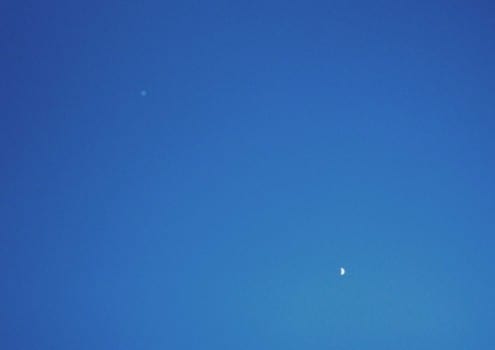
Jupiter and Venus as seen during daylight at 7pm by Francisco Diego (UCL Physics & Astronomy) with magnification similar to an ordinary pair of binoculars – they should be even clearer once the Sun has set.
Added 1 July:
There was a bit of cloud last night, but the planets were visible for a time. Here’s an amazing shot captured by Francisco on the night of 30 June (click the photo to enlarge):
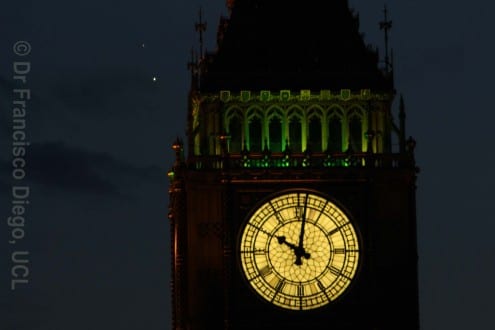
Venus and Jupiter by Big Ben on 30 June. Photo credit: Francisco Diego (All rights reserved, not to be reproduced without permission)
Tonight, they will still be visible but a touch further apart, and crescent Venus and the disk of Jupiter will have swapped positions as they continue their journey through the Solar System.
10 Questions
By ucqncca, on 29 June 2015
In this monthly feature, the Institute of Biomedical Engineering (IBME) interviews our researchers, academics, students, clinicians, affiliates and partners to find out a little more about who they are and what they do.
This month we interviewed Dr Tom Carlson, a Lecturer at the Aspire CREATe – Centre for Rehabilitation Engineering and Assistive Technology, UCL. We asked him 10 questions around his research, career and personal life. Here are his answers….
Aspire Lecturer – just to clarify, rather than “aspiring” to be a lecturer, this lectureship is part-funded by the Aspire Spinal Injury Charity. Our lab is located close to the Aspire headquarters on UCL’s campus at the Royal National Orthopaedic Hospital, Stanmore.
2) How long have you worked as an Aspire Lecturer?
One-and-a-half years.
3) What keywords would you pick to describe your work?
Stimulating, rewarding, beneficial, challenging and fun!
4) What brought you to the world of science/engineering/medical technologies/medicine?
When I was younger I loved building things with Lego. I also really enjoyed taking things apart and figuring out how to put them back together (or not) – fortunately my parents were very patient!
It was my Grandad who taught me all life’s essentials in his wood workshop – how to use a multitude of hand tools, how to solder, how to make a dovetail joint… I also have to thank Graham Bennett, my high school electronics teacher, who staved off retirement and came back part-time to teach our 4-pupil-strong A-level electronics classes. He was definitely a catalyst of my passion for all things electric, and he encouraged me to pursue Electronic Engineering at university.
It wasn’t until my PhD with Yiannis Demiris at Imperial College London that I began to gravitate towards the medical sector. Later I received a lot more exposure to the clinical world during my post doc years with José del R. Millán at École Polytechnique Fédérale de Lausanne (EPFL) in Switzerland.
5) What do you enjoy most about your work?
I love playing with robots and it’s even better when we’re developing medical technologies to actually help people get on with their lives. I also enjoy meeting all the diverse people along the way, from scientists, to clinicians, to patients and the general public – we all share the same enthusiasm for the projects we’re working on and I have friends all over the world.
6) What do you feel are the main challenges facing your research/clinical practice at the moment?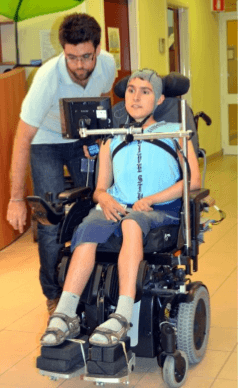
I guess one of the main challenges is managing the interests and expectations of all the stakeholders – the patients and their families, the charities, our academic, industrial and clinical collaborators…
And certainly the key technical challenge is how to deal with the variability in our human users – everyone is different; everyone has their own capabilities, needs and desires – how can we create generic technologies that are cost-effective, reliable and useful, but at the same time meet the very specific (and ever-changing) demands of each individual user?
7) How will you deal with these challenges?
By involving the stakeholders at all stages throughout the research and being open and honest about where we are and where we’re going, we hope we can manage their expectations. For example, on some of our recent grant applications, in addition to consulting with our industrial partners, we are also involving potential end-users as co-applicants, who can then take a very active and important advisory role in the project.
As for the technical challenge of end-user variability, we are working on creating adaptive and learning algorithms, such that as your capabilities change, so does the level of assistance or support provided by our “shared control” systems. We’re trying to do this at multiple timescales, to enable us to cope with short-term changes, like fatigue, as well as longer-term behavioural changes.
8) What has been your career highlight?
It’s still early days, but I would have to say that my career highlight so far was when we got the first patient driving our brain-controlled wheelchair around a rehabilitation centre in Switzerland – that was only a demonstration and there’s still a lot of work to do, but it was a pretty exciting moment!
9) Who has been your greatest mentor and why?
When I first became a postdoctoral researcher there were two senior scientists in the lab, Dr Robert Leeb and Dr Ricardo Chavarriaga. They have been an immense help in mentoring me during the transition from being a PhD student to an independent researcher and also in the transition from a very much electronic engineering world into the biomedical engineering world.
1 0) What do you do in your spare time?
0) What do you do in your spare time?
In Switzerland I spent my time hiking in the alps and skating on frozen lakes. Now I’m back in the UK, the hikes are a little less steep! I enjoy playing the piano, and more recently I’ve spent a lot of time decorating my new house.
Tom Carlson obtained his MEng (2006) and PhD (2010) from the Electrical Engineering Department at Imperial College London. Before moving to UCL, he undertook three-and-a-half years of postdoctoral research on brain-computer interfaces at EPFL, Switzerland.
Tom is currently working on the user-centred design of assistive robotic technologies for people with spinal cord injuries. In particular, he is developing shared control techniques for operating devices such as wheelchairs, with novel interfaces, eg brain-machine interfaces and eye-trackers. These devices predict the user’s intention in the context of an environment, translating from wheelchairs to exoskeletons.
He is also an active member of the IEEE SMC Technical Committee on Shared Control, which he co-founded and has chaired for the last three years.
Bringing experts together to better understand hazards and disasters
By Oli Usher, on 23 June 2015
How can we best deal with hazards and disasters?
Earthquakes aren’t just about geological processes. Hurricanes aren’t just about wind. Terrorist attacks aren’t just about gunmen and roadside bombs.

Earthquake damage after the 2009 L’Aquila earthquake in Italy: the risks posed by earthquakes are as much to do with human factors such as architecture, engineering and society, as they are to do with the geology of a region. Photo: Joanna Faure Walker (IRDR)
In all of these cases, complex underlying causes come together with society, culture and human behaviour. Studying risks and disasters requires interdisciplinary work. At UCL, the Institute for Risk & Disaster Reduction (IRDR) coordinates research and teaching in this area, bringing together experts from across the university, as well as building links with government, NGOs and business.
This week is the highlight of IRDR’s academic calendar, with the IRDR Academic Summit on Wednesday, and its Annual Conference on Thursday.
The conference will cover the following topics:
- Future Arctic risks: As sea ice recedes thanks to climate change, we can expect substantial changes – for indigenous peoples, the environment, commercial activities and geopolitical relations. But how and when will these develop? And how can our current knowledge and understanding of the Arctic guide us?
- Visualisation of hazards and risks: Risks can be distilled down to numbers and statistics. But how can these best be presented to non-experts? Visualisations and maps of risks and hazards are a key tool for explaining complex information to the public and policymakers.
- Ebola: The West African Ebola epidemic is finally petering out, but it was an alarming reminder of how diseases can spread. The conference will explore how Save the Children set up and operated a treatment centre in Sierra Leone during the crisis.
There will also be a keynote speech from Sir Mark Walport, the UK Government Chief Scientific Adviser, on how to communicate risk and hazard to policymakers – a summary of which will be published on the UCL Events Blog next week.
 Close
Close






